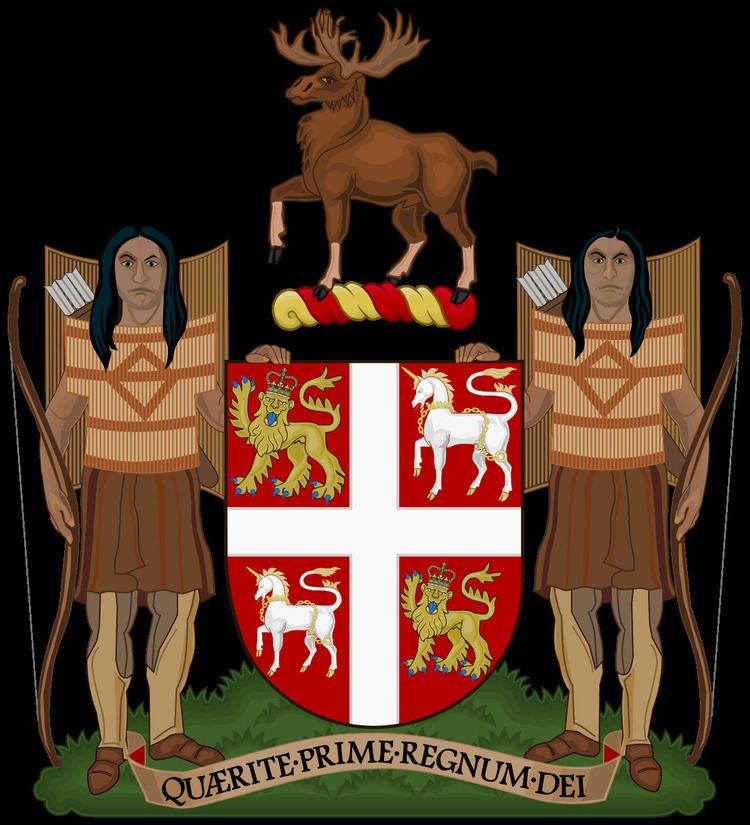 | ||
Armiger Elizabeth II in Right of Newfoundland & Labrador Adopted 1637/8, fell into disuse, readopted 1928 Crest Upon a wreath Or & Gules an elk passant proper Escutcheon Gules a cross argent, in the first quarter a lion passant gardant crowned Or in the second quarter a Unicorn passant argent armed maned and unguled Or gorged with a crown a chain affixed thereto passing between his forelegs and reflexed over his back Or in the third quarter as in the second in the fourth quarter as in the first Supporters Two Beothuks garbed for war proper Motto QUAERITE PRIME REGNUM DEI"Seek ye first the kingdom of God."A quote from The Gospel According to St. Matthew 6:33 | ||
The coat of arms of the province of Newfoundland and Labrador was originally granted by Garter King of Arms, during the reign of King Charles I of England, on 1 January 1637/8
Contents
History
David Kirke, Governor of Newfoundland from 1638 to 1651, was the original bearer of the arms, which later faded into obscurity.
In 1893, D.W. Prowse published A History of Newfoundland, in which he printed a copy of the Newfoundland arms. Prowse erroneously attributed the armorial bearings to John Guy. The Newfoundland Post Office perpetuated his error by issuing a 1910 two-cent stamp depicting the arms and indicating they were issued to the London and Bristol Company, which financed Guy's colonization attempt.
The Newfoundland arms were rediscovered by London archivists after World War I, and in 1928 became the official coat of arms of the Dominion of Newfoundland. It has been in use ever since, despite the changes in Newfoundland and Labrador's status from Dominion to a colony run by the Commission of Government in 1934, and subsequently to a province of Canada in 1949. The Coat of Arms Act (RSNL 1990, chapter C-20, as amended) provides the current legal authority for the use of the arms.
Symbolism
Crest
Newfoundland's caribou herds are represented by the elk in the crest.Escutcheon
Two silver unicorns and two gold lions occupy opposing quadrants of the shield. This part of the Coat of Arms recalls the royal beasts that support the arms of the Monarch, the lion represents England and the unicorn stands for Scotland.Compartment
A mossy knoll.Supporters
The two Beothuk supporters refer to the indigenous population of Newfoundland.Motto
Quaerite prime Regnum Dei, quoting Matthew 6:33 from the Bible, "Seek ye first the kingdom of God".